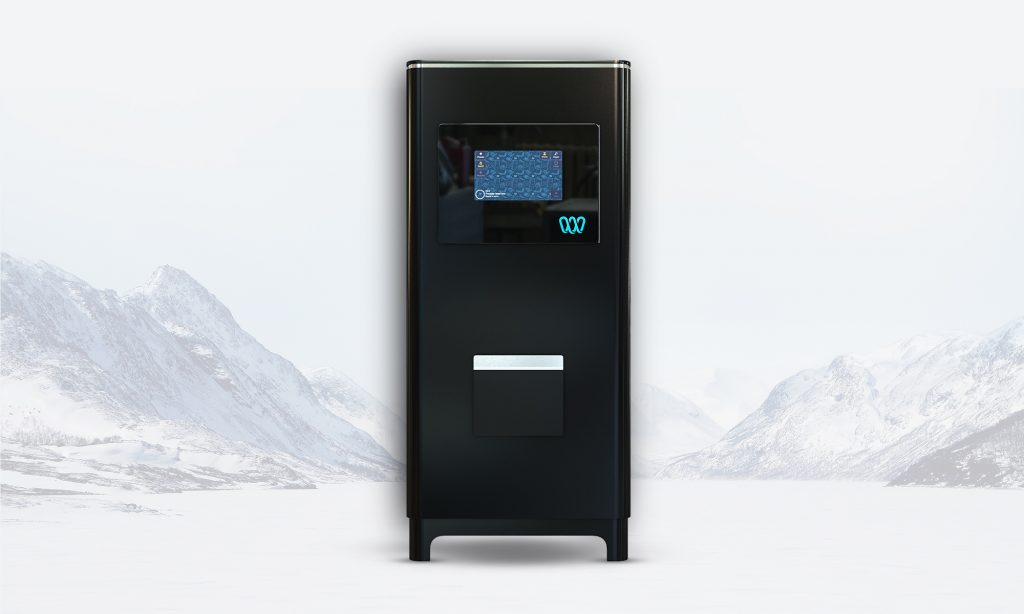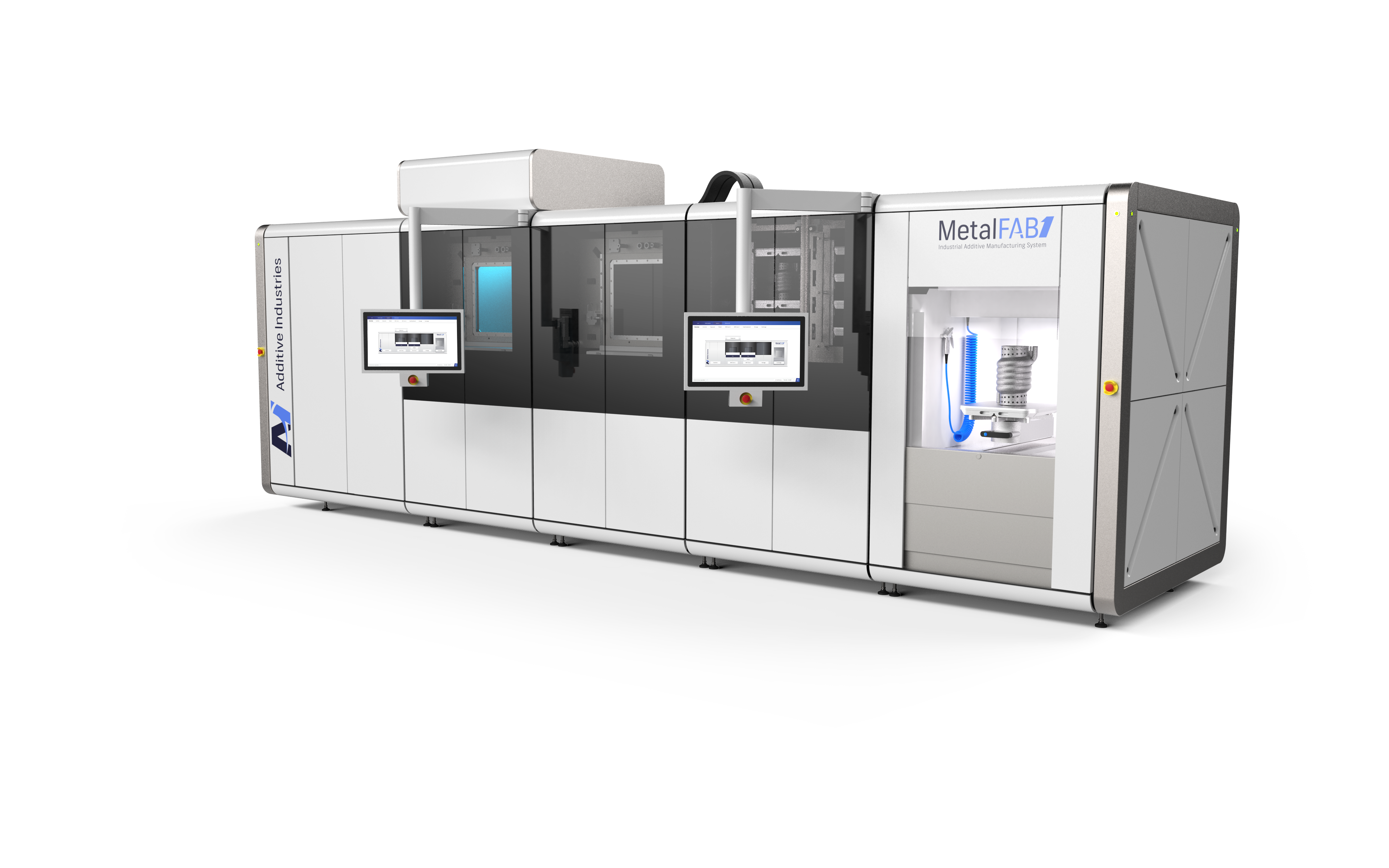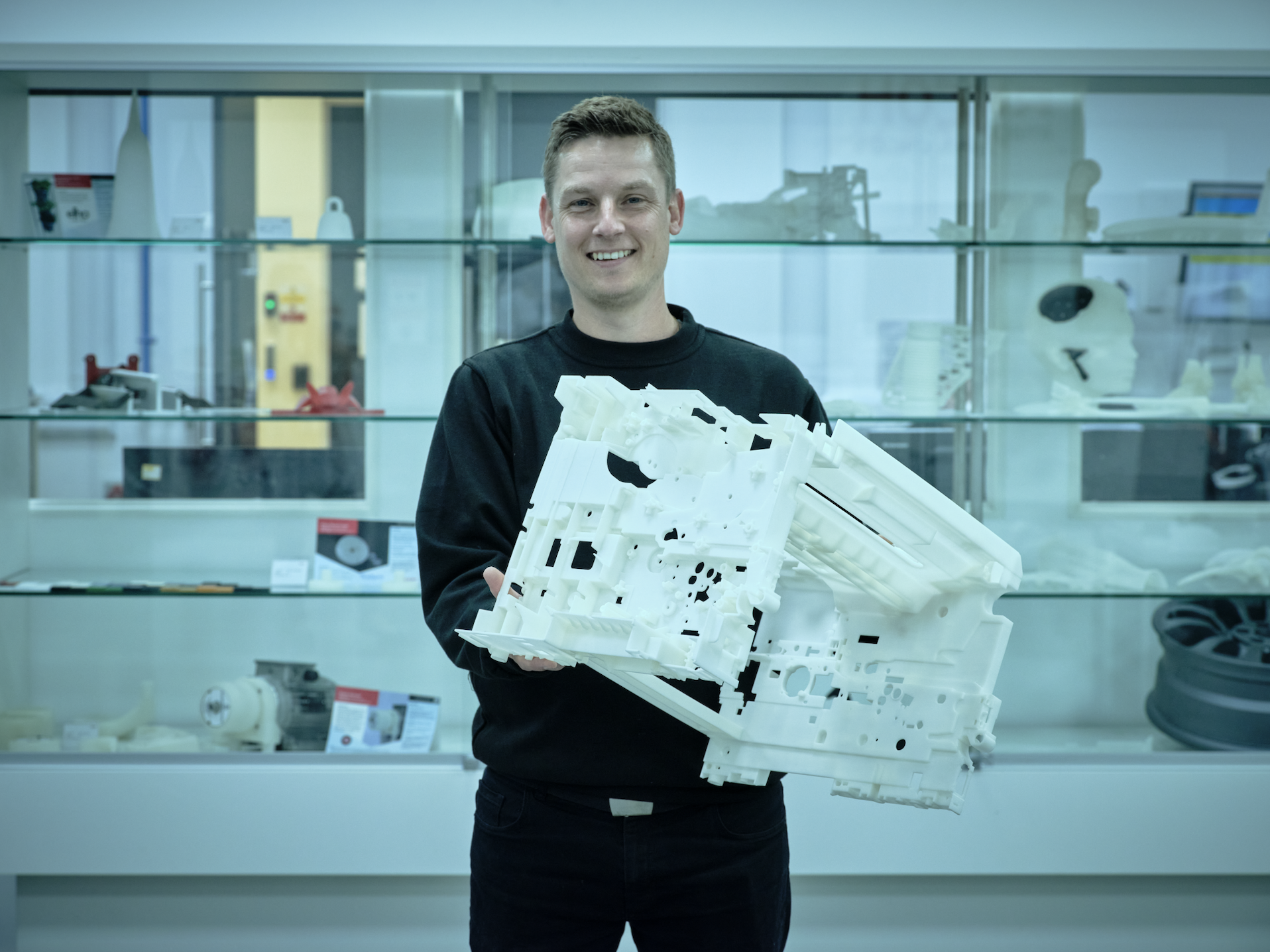In a typical year, the Formnext event sees people travel from all over the world to Frankfurt for a four-day showcase, loaded with breakout sessions and networking events, highlighting the latest trends in 3D printing. But due to the recent rise of the COVID-19 pandemic and the associated increase in travel restrictions, this year’s Formnext event moved to a digital platform, and renamed “Formnext Connect.” It still managed to maintain its global hotspot aura, as more than 45,000 spectators tuned in to watch lectures, presentations, and visit exhibit booths from leading companies and startups in the additive industry.
From November 10 through 12, the virtual event also turned into an ideal platform for unveiling new 3D printing innovations. Throughout the week, 3DPrint.com has highlighted international product launches, amongst them numerous new materials from Nexa3D, an SLM machine with 12 lasers, as well as post-processing solutions for finishing from Farsoon, and exciting new developments by 3D Systems, Mimaki, Additive Industries, Materialise, Stratasys, Ultimaker, Markforged, Carbon, and Desktop Metal. Now that Formnext Connect has come to an end, we have even more insight into other important announcements that took place during the event.
Wematter Launched Gravity 2021
Swedish 3D printing firm Wematter revealed its latest Selective Laser Sintering (SLS) additive manufacturing (AM) system. The new Gravity 2021 is the newest iteration in the series of SLS Gravity machines and promises a high degree of automation, alleviating a lot of the user’s work. The novel printer enables an ecosystem that supports design engineers producing durable 3D printed components in an office environment or workshop. Gravity is Wematter’s most advanced product with over 400 unique components and hand-built at the startup’s facility in Linköping.
When it comes to the machine’s hardware, it is the recoater mechanics that have undergone the biggest change. By further encapsulating the construction, no moving parts are worn during operation. Thanks to this, two out of ten steps are also saved during each cleaning of the machine’s build-chamber, reducing the set-up time for each job started. For Gravity 2021, the company tried to make it easier for users and to accelerate product development.
Oqton and EOS Partner for Seamless AM Workflows
Oqton, a startup that created an artificial intelligence (AI)-driven factory operating system, announced the integration of EOS’ software capabilities into its FactoryOS end-to-end production platform. The partnership is a great step towards a full autonomous manufacturing process and overall cost savings. Oqton was able to deeply integrate its AI-automated build preparation workflow directly to the EOS systems of its customers, allowing them to drive, manage, and track them directly from the cloud. Enabling them to send 3D print jobs from the cloud directly to a 3D printer anywhere in the world, get alerts on a mobile device when a build is ready, deliver a full job quality report with every produced part and automatically optimize nests and schedule build jobs to maximize machine utilization. This is considered by the companies as a great step towards full autonomous manufacturing.
New Customers: Fusor Tech Buys MetalFAB1 AM Machine
A new AM startup focusing on advanced metal parts and technologies for space, oil and gas, marine, and medical sectors, announced the purchase of its first MetalFAB1 System from Additive Industries. The new UK-based company, called Fusor Tech is hoping to manufacture different types of metallic components that are fundamental to operations in these sectors, and hopes to benefit from MetalFAB1’s integrated metal AM system designed for high-end industrial applications in demanding markets.
Fusor Tech wants to take AM solutions to countries in the Middle East, allowing its engineers to quickly solve customer manufacturing problems regionally. The long term objective is to develop a market of digital spares in the oil, gas, and petrochemical sectors, initially focusing on the Middle East and North Africa (MENA) regions, and taking AM technology straight to the source. In this way, the newly-founded startup is channeling it’s vision to build precise parts for vital industries with 3D printing.
Materialise: Support for Metal Binder Jetting
Co-creations and partnerships are continually helping transform the 3D printing ecosystem. One of the latest collaborations brings together Materialise and Desktop Metal to support its binder jetting technology by introducing a new Desktop Metal Build Processor. The move is part of Materialise’s strategy to remove some of the remaining barriers to adoption of 3D printing, including speed, scale, and cost, which the company claims require a closer integration between software and machine. Desktop Metal, a leader in mass production and turnkey AM solutions, will make the Build Processor available as an add-on software offering with its advanced metal 3D printing solutions, that is, its Shop System for mid-volume manufacturing, and the Production System for high volume mass production.
Lubrizol Materials Distribution
Leading global maker of additives for lubricants and fuels Lubrizol chose ArtSystems, a large format print and imaging trade reseller, to distribute its ESTANE range of thermoplastic polyurethane (TPU)s for the HP Multi Jet Fusion 3D printers, in the UK and Ireland. Released in January 2020, the ESTANE 3D TPU M95A powder is the only TPU available for HP’s Jet Fusion 4200 series 3D printing solution.
Since the powder was specially formulated for AM and HP’s Jet Fusion series, there is a broad potential range of serial production possibilities, from footwear to automotive and consumer-focused parts. The powder was engineered to provide a more efficient printing experience when compared with elastomers in other powder bed fusion printing technologies. Moreover, this new relationship means ArtSystems will be supporting its HP Jet Fusion reseller customer base over the coming months with a sample and user parts testing program.
Solukon’s New Polymer AM Powder Removal System
As the latest addition to Solukon’s line of automatic depowdering systems for the AM segment, the SFP770 is an innovative solution for the safe and efficient unpacking and cleaning of parts built on polymer powder bed fusion AM platforms. The pioneering and leading supplier of powder removal and processing systems for metal and polymer AM said the new machine will help accelerate post-processing and prevent any exposure to fine polymer powder. The company is generally working towards creating highly economical and powder-free shop floors for its clients.
Solukon suggested that the SFP770 will offer significant benefits for customers looking to industrialize their AM operations by overcoming the challenges of using polymer powders, such as labor cost savings, health and safety concerns, inconsistent and unregulated cleaning results, and risks of accumulated dust. For now, the system is already running successfully at one of Solukon’s customer’s site, and Formnext attendees had the chance to talk to Solukon to get a live demo.
Optomec’s New Compact 3D Metal Printers
AM system supplier Optomec announced the release of two new 3D metal printing systems based on Directed Energy Deposition (DED), a free form powder-based 3D metal printing technology that Optomec pioneered under the LENS trademark and continues to lead the market with more than 200 global installations. The all-in-one CS250 machine is designed for research, enabling rapid alloy development and graded-material part creation, with pricing starting below $300,000.
The other new system, called HC-TBR, is designed for high performance, high volume production applications, capable of high volume production for reactive metals like aluminum and titanium. HC-TBR was created for easy integration into automated work cells and includes automatic antechamber doors which can be loaded and unloaded robotically. Optomec claimed both new machines offer unparalleled value in terms of functionality, performance, flexibility, and pricing.
New 3D Scanners by Shining 3D
Shining 3D, the global powerhouse of 3D digitization and AM technologies, is adding two new 3D scanners to its wide range of products. One of them is a new fully automatic desktop 3D inspection scanner that integrates high-accuracy 3D scanning and 3D inspection and is designed for improving the efficiency of scanning small and complex parts. Autoscan Inspec’s intuitive user interface, easy operation, and artificial intelligence (AI) scanning algorithm, make it ideal for inspection and quality control, reverse engineering, product design, and other fields.
The company is also adding a new line of handheld color 3D scanners to the roundup of the proven EinScan Series. Through its infrared invisible light source and handling flexibility, EinScan H and HX Handheld Color 3D Scanners not only popularize the use of portable color 3D scanning technology, but it makes it the perfect companion for applications in the medical sector, art and heritage, and education, suggested Shining 3D during the product launch.
Sintavia’s New Certification
Leading Tier One additive manufacturer Sintavia announced it had achieved ISO 14001 approval for its environmental management system at its Hollywood, Florida facility. The new accreditation, which is issued to companies that demonstrate conformance to a set of environmental standards, represents the third ISO certification attained by Sintavia since 2015. The certification allows the company to measure sustainable manufacturing efficiencies and monitor progress towards sustainability goals. The environmental management system certification includes the scope of metal additive design and manufacturing as well as metrological and metallurgical testing.
DSM’s New Bio-based Material
A new high-performance material for fused granulate fabrication or 3D pellet printing is now available from Royal DSM, a global science-based company in nutrition, health, and sustainable living. The 3D printing optimized version of the EcoPaXX material used in end-use parts is a fit-for-purpose material that delivers on performance and sustainability. The aliphatic, biobased polyamide EcoPaXX AM4001 GF combines all the features needed for additively manufacturing automotive tooling and structural parts with pellet printing or fused granulate fabrication.
Exhibiting excellent thermal and mechanical properties with low moisture uptake, DSM’s innovation is a combination of its proprietary technology and the power of nature’s own building blocks derived from castor plants and is in line with sustainability goals that are strongly emerging throughout the AM industry.
Ricoh 3D Launched Nylon for SLS
Industry specialist Ricoh 3D is adding PA2200 Nylon 12 material for SLS to its unique 3D printing material portfolio. The company decided to integrate the popular prototyping material into its service offering at customers’ requests, especially architectural studios and other businesses that create parts with a high visual finish or need large-scale models. At the Formnext event, Ricoh also showcased its new commercially available range of thermoset materials for the production off-end-use parts. After months of stringent tests and assessments, the materials created through a partnership with material innovator TIGER Coatings and officially announced at last year’s Formnext event, are now fully validated and ready to be deployed for end-parts.
Subscribe to Our Email Newsletter
Stay up-to-date on all the latest news from the 3D printing industry and receive information and offers from third party vendors.
You May Also Like
3D Printing Financials: Steakholder Foods Balances Losses and 3D Printed Tech Advances in 2023
A pioneer in the field of 3D printed meat and fish, Steakholder Foods (Nasdaq: STKH) disclosed its 2023 financial results, a year highlighted by technological progress but overshadowed by financial...
3D Printing Financials: Protolabs’ Q1 3D Printing Revenue is Flat, Company Advances in Technology Push
Protolabs (NYSE: PRLB) has kicked off 2024 with a mild boost in revenue, revealing how the Minnesota-based company manages to adapt and thrive even in uncertain market conditions. While the...
Supply Chain Management and the Role of 3D Printing Digital Inventories
As the additive manufacturing (AM) industry grows beyond its humble roots as a rapid prototyping technology, it has been adopted by some of the world’s leading companies to produce not...
3D Printing Financials: Materialise’s Profitability Amid Revenue Dip in Q1 2024
Materialise (Nasdaq: MTLS) has released its first-quarter earnings for 2024, highlighting a challenging quarter with some key advances despite a dip in revenue. While navigating a mixed performance across its...







































